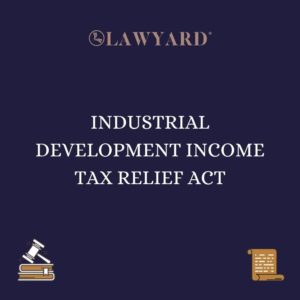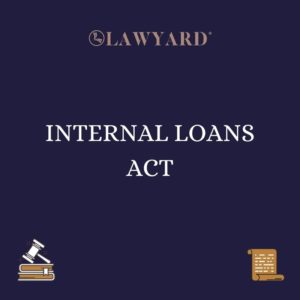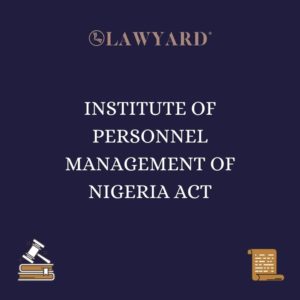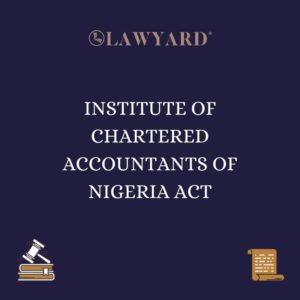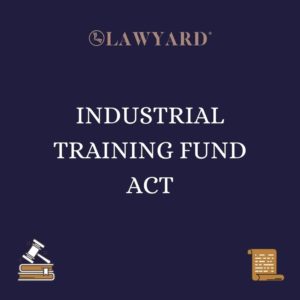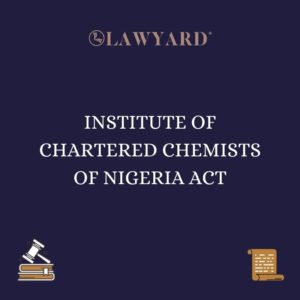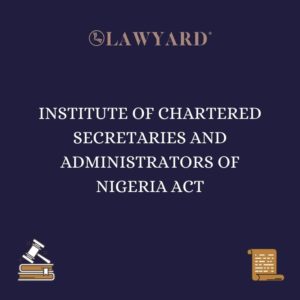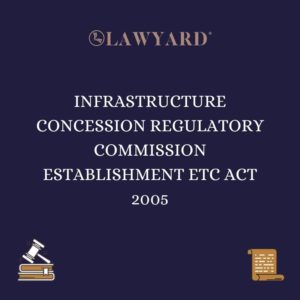The Digitalization of Advance Tax Rulings: The use of machine learning to improve the ease of doing business, preventing avoidable litigation and ensuring better policy decisions.
By Chiedozie Kelechi Ogbu and Eze Kenechukwu.
Introduction
The need for an advanced tax ruling may arise where there is an uncertainty as to the correct application or interpretation of tax law to a set of facts. In such cases, the tax payer can apply to the tax authority for an interpretation of the statute and how the tax authority would apply tax law to instant facts.
An advance tax ruling regime seeks to promote clarity and consistency regarding the application of the tax law for both taxpayers and the tax authority. ATR’s are mostly utilized by companies who wish to assess their liability in relation to specific transactions.
As a matter of practice, the tax authority has a duty to issue an accurate ruling as fast as it can, in order to ensure that the transaction is not lost due to the unavailability of an accurate representation of the transaction’s tax liability.
ATRs are advantageous in promoting clarity, predictability and consistency regarding the application of tax laws, thereby increasing tax compliance, generally boosting taxpayer confidence and increasing potential investor confidence. This, in turn, boosts the ease of doing business.
This article examines how technology can be adopted to make the advance tax ruling regime more efficient.
The Legal Position of ATRs in Nigeria.
An advance tax ruling is a communication from the relevant tax authority to the tax payer stating how the tax authority would apply the law in relation to a specific set of facts and circumstances. The OECD’s Glossary of Tax Terms accurately defines advance tax ruling as “a letter ruling, which is a written statement, issued to a taxpayer by tax authorities, that interprets and applies the tax law to a specific set of facts”
The need for an advanced tax ruling may arise where there is an uncertainty as to the correct application or interpretation of tax law to a set of facts. In such cases, the tax payer can apply to the tax authority for an interpretation of the statute and how the tax authority would apply the tax law to instant facts.
Knowledge of an unfavorable ruling, or favorable ruling can deter taxpayers from entering into particular arrangements. Further, the process can alert tax practitioners and tax authorities to tax issues which have not previously been considered.
Tax rulings lessen possible ambiguities in tax law and helps the tax payer avoid penalties. This is so as a tax payer may apply for a tax ruling and if the relevant tax authority issues what the taxpayer considers an adverse ruling, the tax payer may either forgo the transaction or comply with the ruling, thereby eliminating the risk of penalties.
In Nigeria, the legal implication of advance tax rulings, and its nature, is largely defined by two conflicting decisions:
Saipem Contracting Nig. Ltd. Ors vs. FIRS, where the Federal High Court held in favor of the FIRS on the ground that: “Parties to a suit cannot by conduct or consent alter the provision of a statute. Notwithstanding whatever representations the 1st defendant made to the Plaintiffs as to their tax liability, it is the law guiding the payment of tax that prevails.” and
CNOOC Exploration and Production Limited (CNOOC)/South Atlantic Petroleum Limited (SAPERTO) V FIRS, where the FHC gave a conflicting ruling that contradicts its earlier decision in Saipem; ruling in favor of the company by upholding the legitimate expectation. It held: “While it is not the duty of the Ministry of Petroleum Resources to inform parties of the tax regime involved in their agreement, the Respondent have indeed endorsed the action of the Ministry by acknowledging and accepting the tax investment credit of the Applicants in 2009 and 2010. This is a complete waiver of responsibility, and acceptance of whatever representation made to the applicants in this case.”
In the Sapiem case, the court did not consider the initial ruling given by the FIRS as binding, while in the CNOOC case the court held FIRS bound by its earlier representation and initial conduct. These two decisions reflect the uncertainty on the binding nature of ATRs in Nigeria.
In the light of the foregoing, we are of the opinion that if accurate rulings devoid of human blemish, based on data and in accordance with domestic laws were issued, disputes between the tax authority and tax payers will be reduced.
The questions therefore are: (i) how can the FIRS reach reliable decisions based on law and available data and (ii) how do we create a system where potential tax disputes which is costly on both ends can be avoided through accurate ATR’s?
Improving ATRs by Machine Learning
Machine learning is a branch of artificial intelligence that gives computers self-learning ability through patterns and periodic human intervention. It is essentially the process of instructing computers to learn.
As a data dependent technology, machine learning can be leveraged to solve the problems of the ATR system in Nigeria. If a machine learning model were to study tax inquiries, and rulings for 10,000 or so taxpayers, it could learn what deductions to take, how those issues affect income tax liability or refund, and offer guidance. With access to a large volume of tax data, tax legislation, circulars and use cases, machine learning can better predict tax liability.
To fully understand this, we shall briefly look at three machine learning methods, and how they can be leveraged on to optimize the utility of ATRs.
- Unsupervised learning: This is an aspect of machine learning that identifies patterns in data. Sometimes data may not be neatly structured, the algorithm is given unstructured and uncategorized data in large amounts in order to identify key structures, or patterns within them.
The application of this feature creates endless possibilities in the policy decision making process, and this can be applied to reform the ATR system. Data from the local tax legislation, case law, executive orders, circulars and all relevant information concerning the past and present actions of the tax administration, etc may be ploughed into the unsupervised machine learning algorithm in order to improve the algorithm’s ability to predict more accurate decisions and make informed, independent rulings.
- Supervised learning: Here, the computer algorithm uses the categorized data to teach itself. The machine actually does the learning. Each piece of data given to the algorithm contains the correct answer about the characteristic of interest.
This means that every piece of data put into the supervised learning program has been analyzed and categorized by unsupervised learning algorithm. The supervised learning algorithm in turn understands and analyzes this data in such a way that it assimilates entirely without fault.
- Deep learning: Deep machine learning is a branch of machine learning which relies on complex statistical models and algorithms with multiple layers of parallel processing that loosely model the way the biological brain works. Each layer of neurons takes the data from the layer below it, performs a calculation/analysis and provides its output to the layer above it.
Neural networks “learn” to perform tasks by considering examples, generally without being programmed with any task specific rules. Deep machine learning requires powerful computers and huge amounts of data to enable the self-learning to take place.
Conclusion
When we talk about machine learning and artificial intelligence of the law, we’re talking about collecting the raw materials, the rulings, the cases, the legislation, etc and bringing it to bear on a particular problem with technological precision.
It is our argument that tax liability should be predictable, accurate and speedily ascertainable, and applying machine learning to requests for advance tax rulings will improve tax administration efficiency.
We have lots of data in the form of rulings and judgments that we can collect as good examples of how the courts have decided matters in the past.
We can also reverse engineer using machine learning methods how the courts are mapping the facts of different situations into outcomes in a way that leads to high quality prediction.
This certainty, predictability and fairness is incredibly valuable to taxpayers, the tax administration, and will ultimately promote investor’s confidence in our tax system.
Our laws may also need to be amended to reflect thorny legal issues that may emerge from the adoption of machine learning.
For example, if a machine learning system gave inappropriate tax advice to a taxpayer/tax professional/tax administrator, who would be liable? The developer of the system, the operator, or the user?
In the light of a fast paced developing world, our legal system needs to start grappling with this and similar issues. Given the pace of AI adoption and machine learning implementation in almost every facet of human life, llegislators and tax administrations may also need to accelerate legislative changes which adopts technology and makes for certainty and accuracy in advance tax rulings in order to drive better investment decisions and avoid needless tax disputes.
About the Authors
Chiedozie Kelechi Ogbu (LLB) is an Associate researcher at the African Centre for Tax and Governance.
Eze Kenechukwu is a penultimate year law student, and Secretary General, The Tax Club UNN.


